I Visited One of the Most Important Sites for the Arts and Crafts Gardens Movement – Here are 3 Easy Ideas I'm Stealing to Turn My Garden into an Extension of the Home
Gravetye Manor in Sussex, England, is the birthplace of wild gardening, where rigid, symmetrical garden ideas were challenged
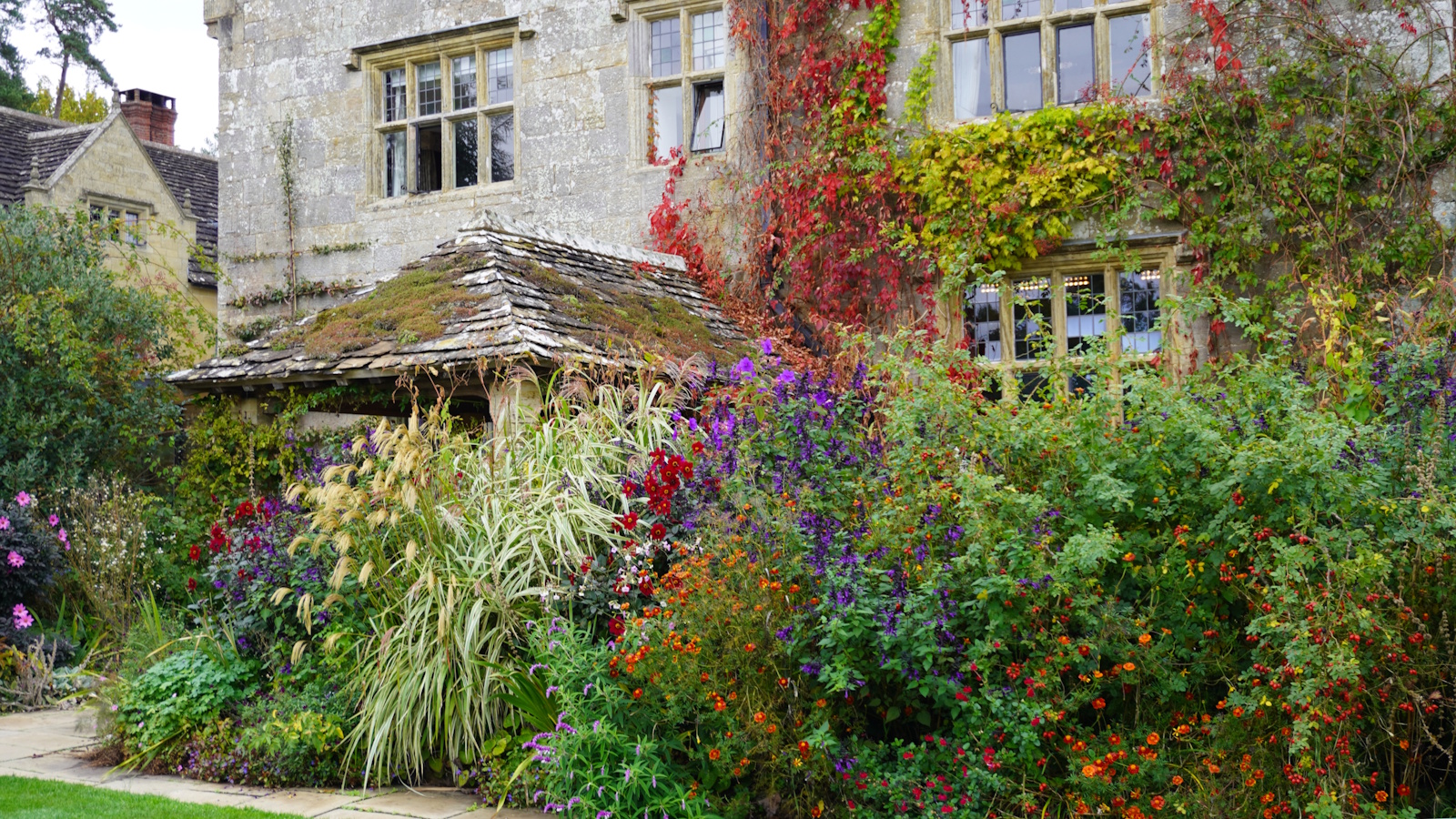

Something I've been researching lately is the concept of Arts and Crafts gardens. It's a movement that originated in the late 19th Century, as Victorian garden norms started to become overturned. It was the start of a new approach to gardening – something more relaxed, naturalistic, with a shifted view of how we use our outdoor space.
I had the privilege of recently visiting one of the historic gardens to have deeply influenced arts and crafts garden design: Gravetye Manor in Sussex, England. Here, horticulturalist William Robinson founded principles of wild gardening and created a garden entirely different to the formal, rigid plantings of the Victorian era. His ideas and experimentation at Gravetye Manor inspired the likes of Gertrude Jekyll, a driving force behind the Arts and Crafts gardens movement.
As I walked around the garden, it was easy to spot Gravetye Manor's arts and crafts garden ideas. Though it should be noted, William himself was not directly involved in the movement. Here, I explore this Victorian garden's link to the movement and share three ideas that can easily be recreated in yards of any size.
Gravetye Manor's Arts and Crafts Gardens Link
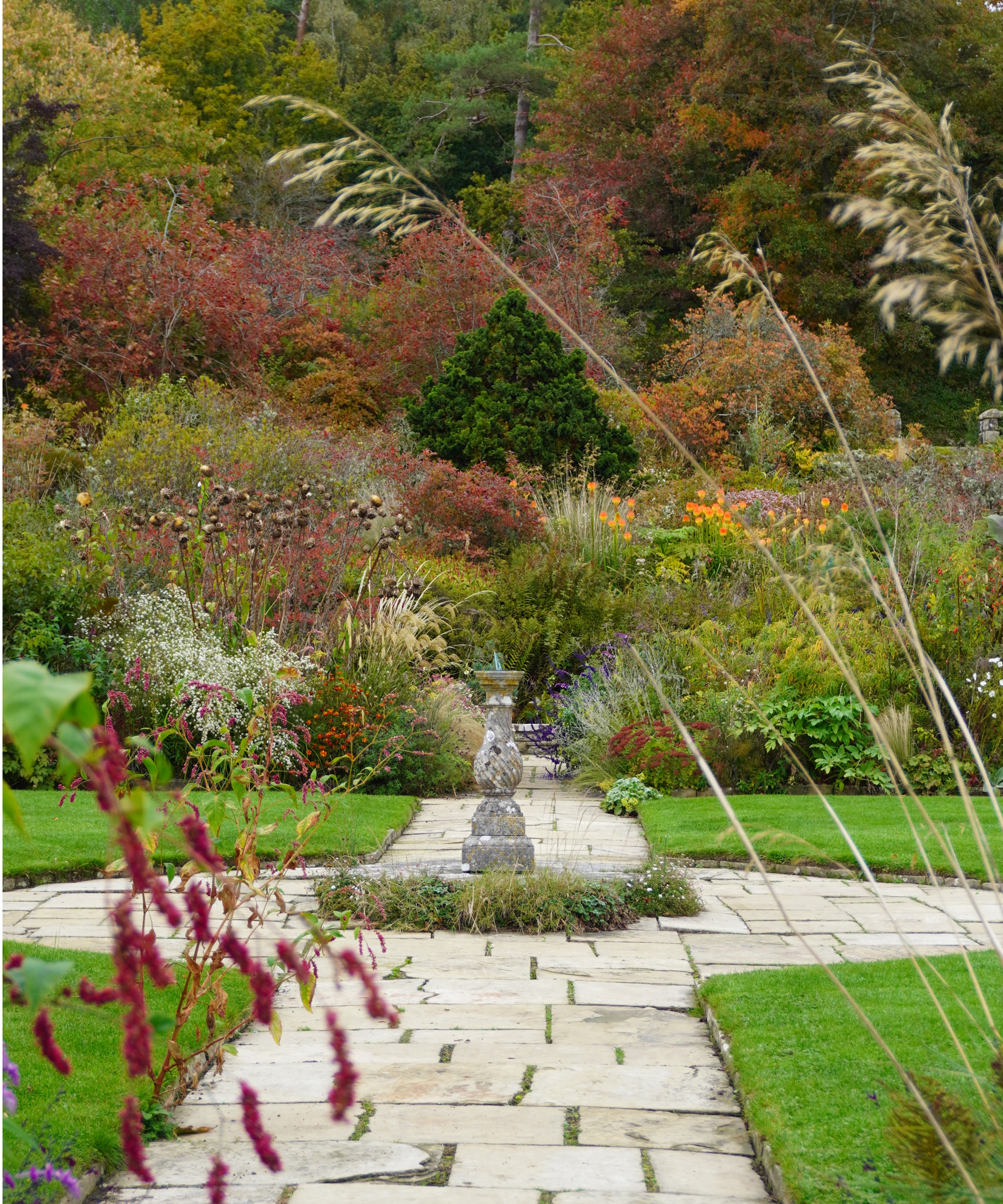
Garvetye Manor is an Elizabethan property, but is most famously known as the former home of Victorian horticulturalist and garden writer, William Robinson. He purchased the property and its surrounding 1,000+ acres of woodlands and lakes in 1884. Residing here for the next 50 years, it was a horticultural playground for William, where he experimented with new ideas.
Most notably, William founded the concept of wild gardening at Gravetye Manor, as well as English cottage garden planting. Both of which can still be seen today in the now luxury hotel's mixed flower borders, wildflower meadows, and naturalistic planting.
'These ideas are outlined in detail in his books The Wild Garden (available on Amazon), Gravetye Manor: 20 Years’ Work round an Old Manor House (available on Amazon), and The English Flower Garden (available on Amazon),' says Head Gardener Tom Coward.
These ideas of William's challenged Victorian garden norms, like formal bedding plants, symmetrical design, and forced annuals. He rather pioneered working with the landscape and favoring hardy, native planting of perennials. It was a gardening approach that created an informal, relaxed look.
Design expertise in your inbox – from inspiring decorating ideas and beautiful celebrity homes to practical gardening advice and shopping round-ups.
This became core to the concept of arts and crafts gardens. It was the idea of the garden being an extension of the home, with the use of natural materials for structures and hardscaping, a return to craftsmanship, and allowing plants to behave and grow as they would in a natural environment.
One of the ways these ideas at Gravetye Manor influenced the movement was through Gertude Jekyll, who Tom notes was 'one of William Robinson's closest associates'.
Gertrude was one of the garden designers central to the Arts and Crafts gardens movement (alongside other figureheads like William Morris), embodying the principles in her own design.
'Her friendship with William meant she often visited Gravetye Manor, where she was influenced by his pioneering ideas around naturalistic planting,' Tom explains.
So, while William himself was not directly involved in the Arts and Crafts gardens movement, the gardening philosophies he established at Gravetye Manor were fundamental to its creation. Today, it still stands as a historic site full of arts and crafts garden examples.
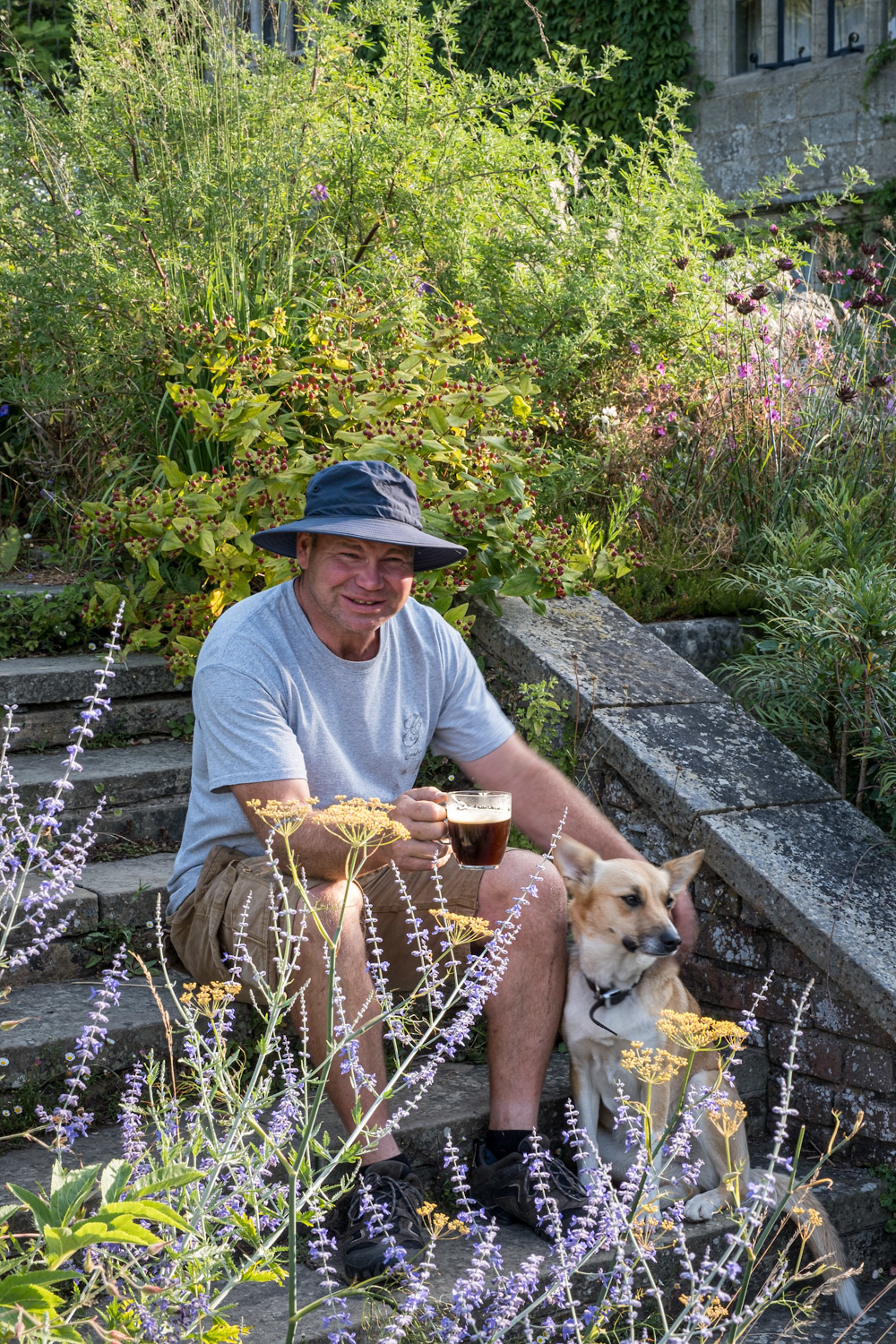
Tom has worked at Gravetye Manor since 2010, helping with major restorations of the garden. He has been a gardener since age 15 with a notable previous role at Great Dixter in East Sussex, England.
3 Arts and Crafts Garden Ideas to Steal from Gravetye Manor
There are plenty of examples of Gravetye Manor's arts and crafts garden ideas in the modern day. These can easily be recreated in a garden of any size, providing you something of a natural landscape in your own backyard.
1. Create Garden Rooms
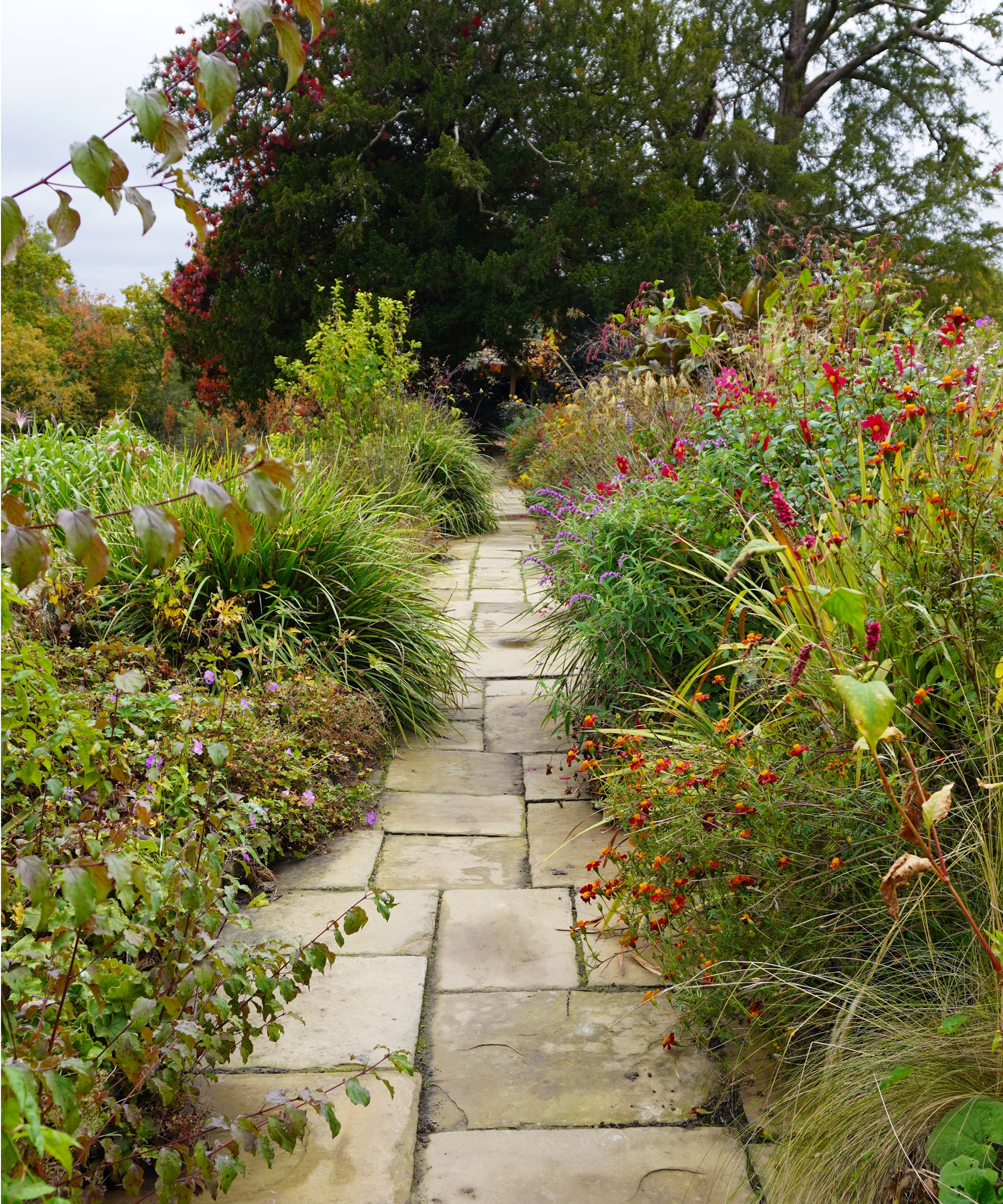
The idea of the home and garden as one is fundamental to the Arts and Crafts gardens movement. One of the most obvious ways to spot this among Gravetye Manor's arts and crafts garden ideas is the many 'garden rooms' it has.
This doesn't refer to the outbuildings often used for a guest suite or office, but rather the outdoor space split into garden zones. Each 'room' serving a different function, just like in a house.
As you step out into the garden at Gravetye Manor, you're greeted with an impressive flower garden full of mixed borders. It has meandering garden paths, leading you through planting of astounding seasonal color. There's even a summer house in the corner for garden hosting and crafting.
Sitting adjacent to the flower garden is the croquet lawn, a fairly bare space that serves as an event space.
'It's a practical space. We often have marquees up and community events happen here,' says Tom. 'Design-wise, it's a very important space because there's a rhythm to a design, and it serves as a pause in that rhythm, offering contrast.'
Beyond this, a woodland garden wows with some of the best trees for fall color. It leads to the incredible elliptical kitchen garden – one of the last productive Victorian kitchen gardens of this size, as it provides the hotel with ingredients for the Michelin Star restaurant.
Other garden rooms at Gravetye include the wildflower meadow and Victorian glasshouses.
Even if you only have a small garden, you can recreate this sense of garden rooms by using garden screening tools (like this trellis from Amazon), creating a vegetable patch in one corner, and surrounding a seating area in wild planting to create a quiet, enclosed space to relax in.
2. Bring the Outdoors In
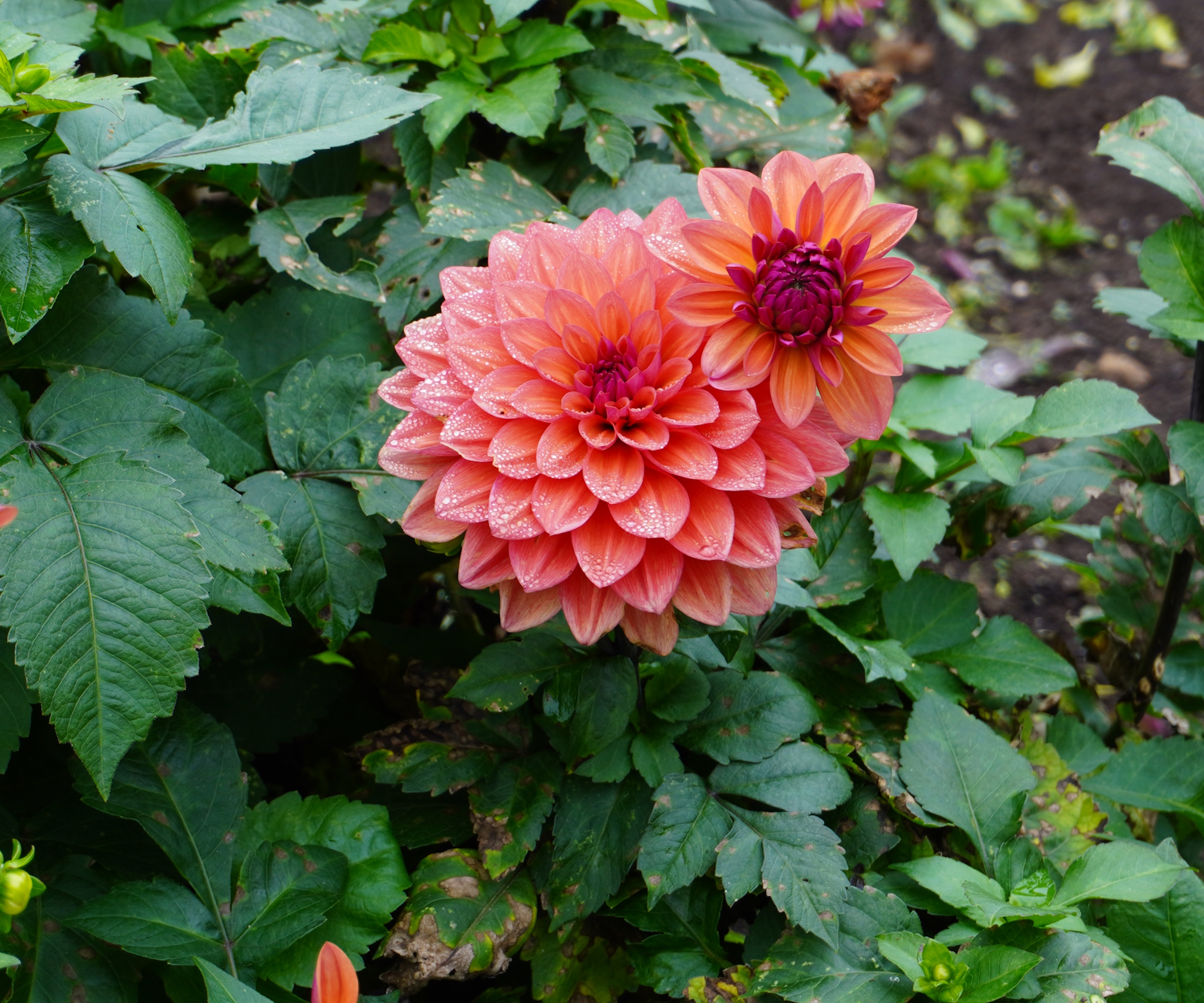
There's no better way to connect the home and garden than bringing the outdoors in. Gravetye's kitchen garden isn't just a productive space for crop production, it also has a cutting patch producing some of the most beautiful blooms.
Indoors, floral arrangements made from homegrown flowers adorn shelves, sideboards, tables, and more.
Even if you're a novice gardener, there are plenty of easy cutting flowers to grow. For example, you can grow dahlias from seed (dahlia seeds available on Amazon) or grow zinnias (zinnia seeds available on True Leaf Market) for simple blooms to snip.
You don't even need a dedicated cutting patch to celebrate your garden indoors, either. Stroll along your borders and take some cuttings from perennials. This is often the best way to create seasonal displays, using ingredients from the garden currently on offer. You could even incorporate stems of fall foliage, for example.
Likewise, why not put ornamental crops on display? For the likes of Thanksgiving, you can create an eye-catching centerpiece made up of fruits and vegetables you've grown yourself – and of course, cooking with them shares the joy even further.
3. Plant Naturalizing Bulbs
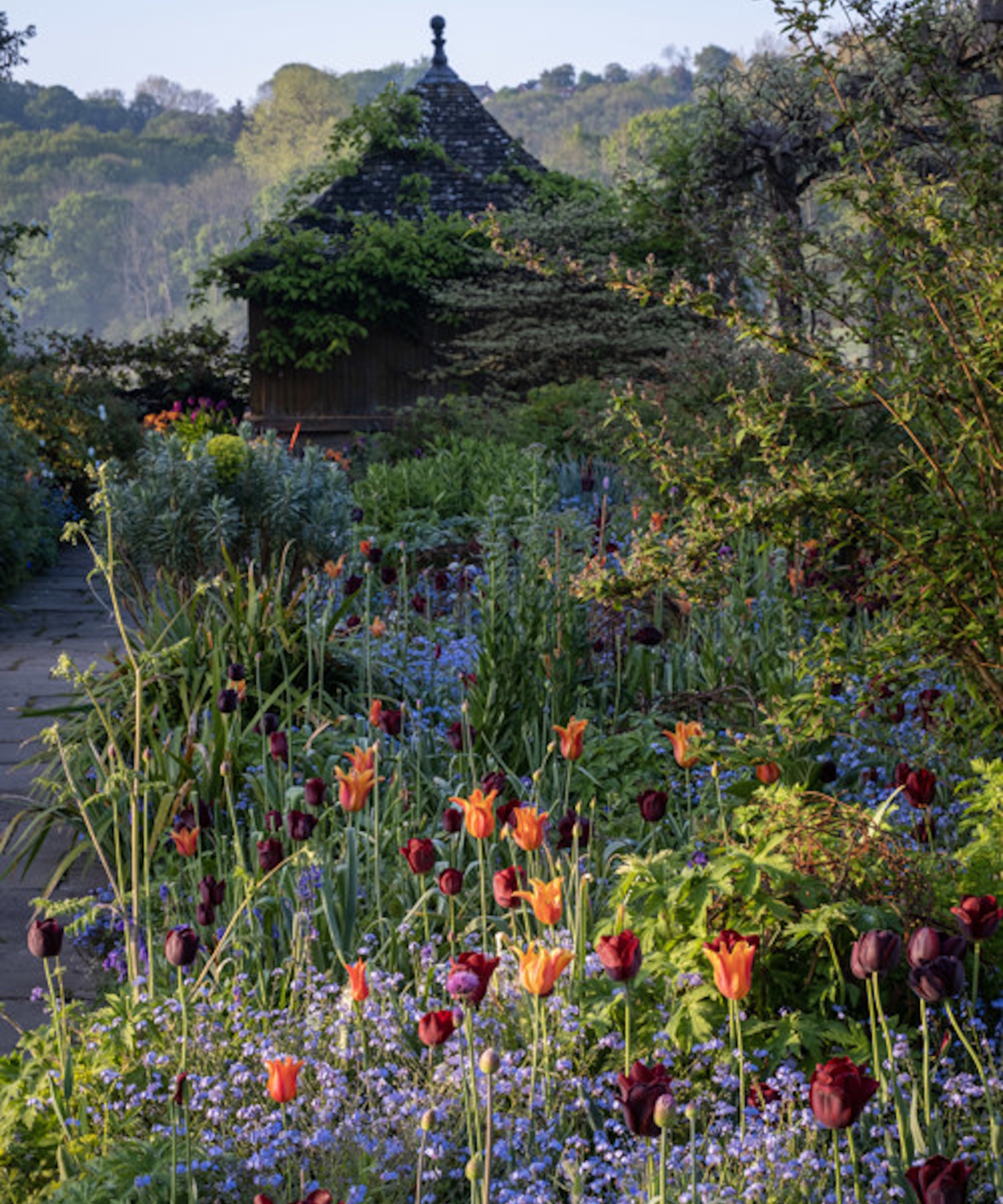
As the home of wild gardening, there's no doubt Gravetye Manor has a naturalistic look, as if the garden has been there forever.
This was one of William Robinson's greatest passions and an idea he pioneered for. Today, Tom and his team of gardeners at Gravetye Manor continue to honor this by planting bulbs for naturalizing.
An extensive wildflower meadow sees tulips (bulbs from Amazon), scilla, and daffodils (bulbs from Burpee) in spring, as well as a carpet of fall crocus later in the year. Camassia also infuses color beneath the garden's apple orchard – something Tom calls a 'productive wild garden.'
Of course, not all homes have such a vast space to create the same showcase, but any size lawn can be turned into a sensational display by planting naturalizing bulbs.
These are the bulbs that spread and multiply naturally over the years, which Tom notes eventually 'looks after itself.'
You'll need to be equipped with some essential gardening tools to achieve this. Tom swears by a bulb planter to make planting more efficient, like this bulb planting tool with a depth marker on Amazon.
FAQs
How Can I Make an Arts and Crafts Garden Container?
The Arts and Crafts gardens movement celebrates natural materials, so choose planters made of stone, wicker, and wood. They should also have a laid-back, simple design, without too many embellishments. As for planting, choose reliable perennials that will return every year in your local region, rather than bedding plants. Soft color palettes, rather than harsh, bold hues, are also favored in this movement.
Gravetye Manor's arts and crafts garden ideas extend beyond the garden, too. Inside the hotel, rooms are named after different fruit trees found in the garden, e.g. lime and mulberry. Other things you can do indoors to embrace this garden idea are to use floral and garden-inspired wallpaper. Our guide to the Arts and Crafts revival trend has more inspiration to explore.
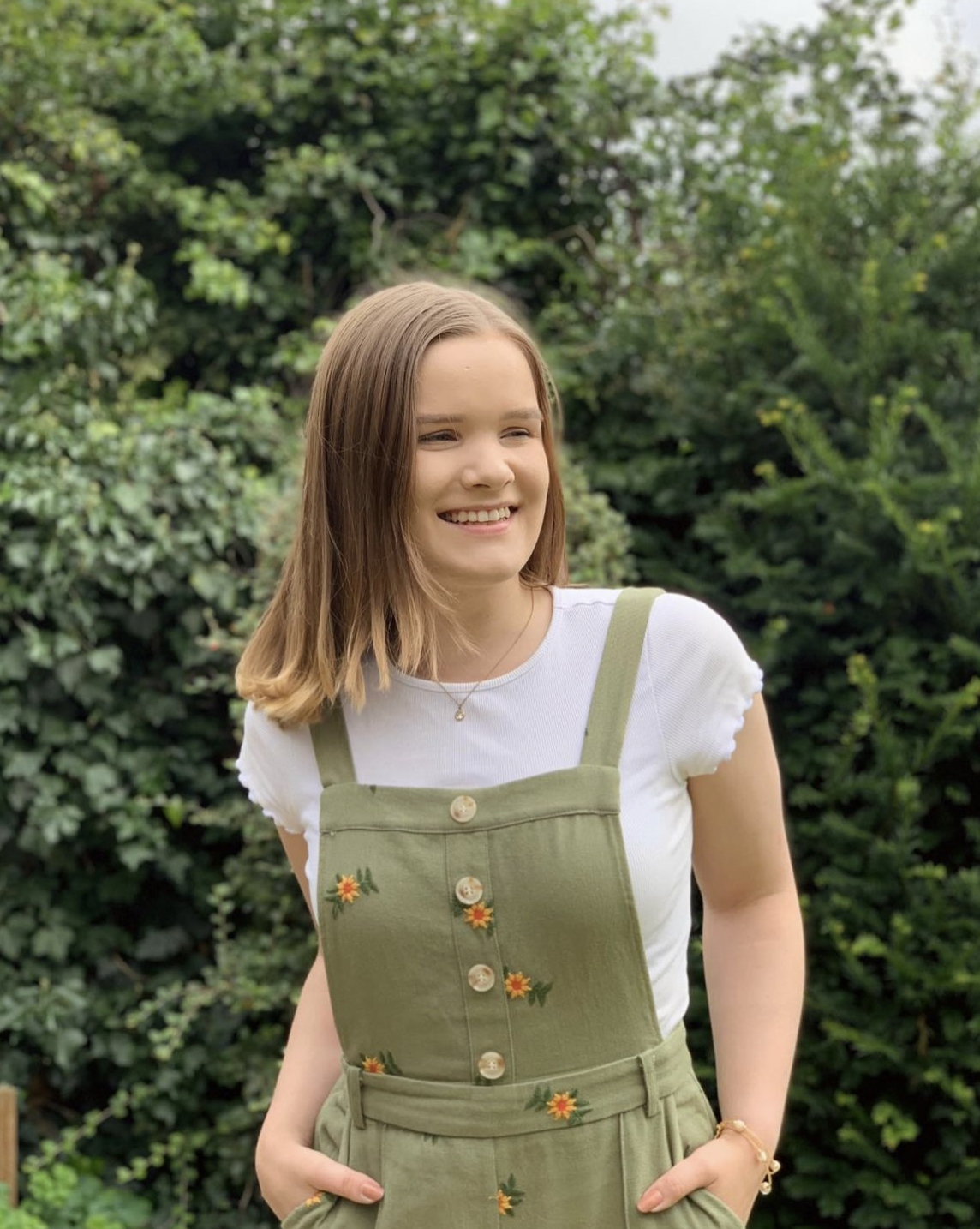
Tenielle is a Gardens Content Editor at Homes & Gardens. She holds a qualification in MA Magazine Journalism and has over six years of journalistic experience. Before coming to Homes & Gardens, Tenielle was in the editorial department at the Royal Horticultural Society and worked on The Garden magazine. As our in-house houseplant expert, Tenielle writes on a range of solutions to houseplant problems, as well as other 'how to' guides, inspiring garden projects, and the latest gardening news. When she isn't writing, Tenielle can be found propagating her ever-growing collection of indoor plants, helping others overcome common houseplant pests and diseases, volunteering at a local gardening club, and attending gardening workshops, like a composting masterclass.